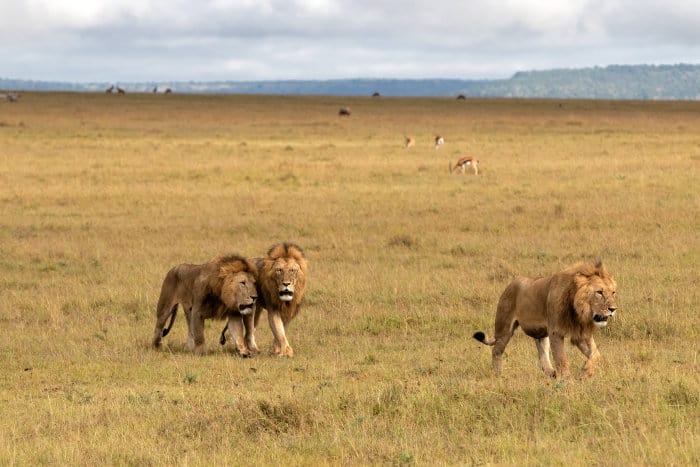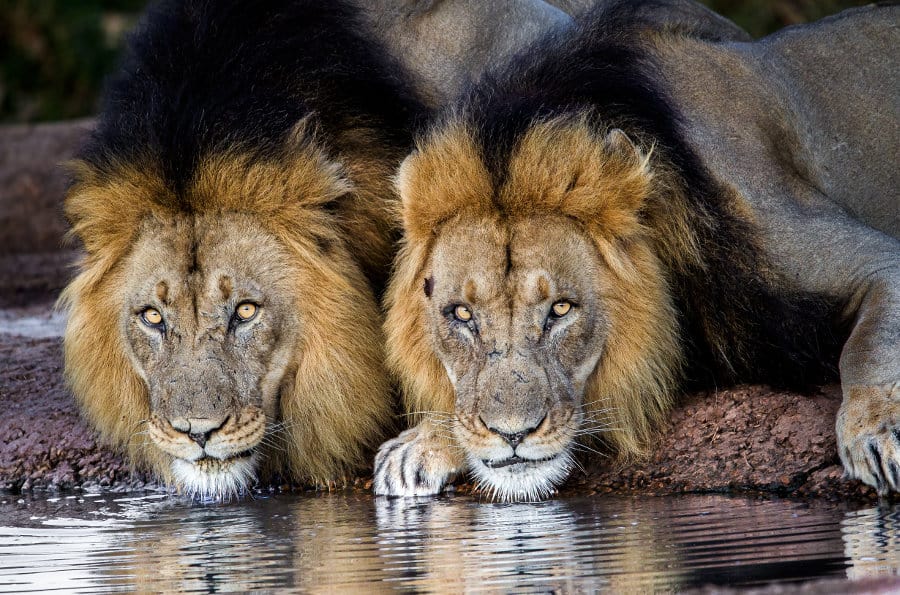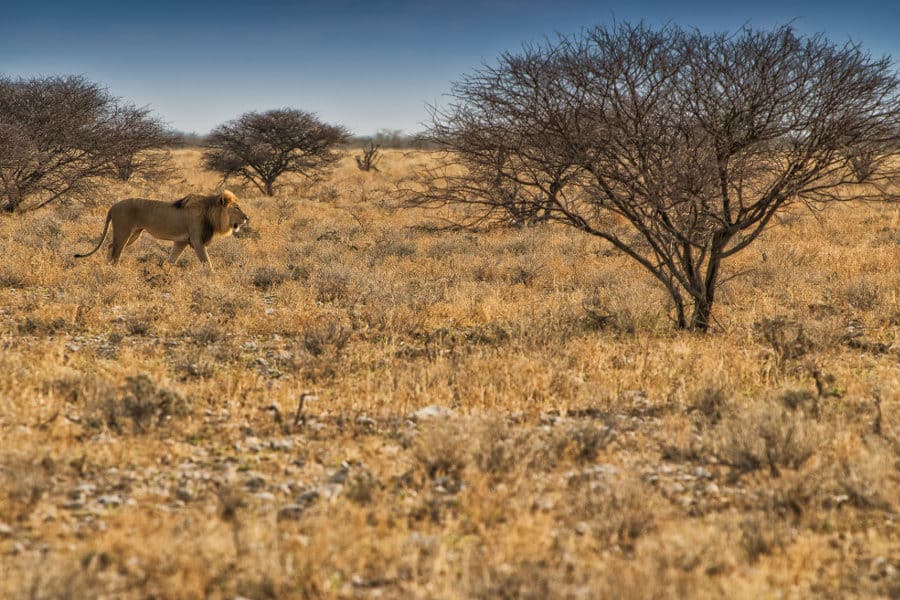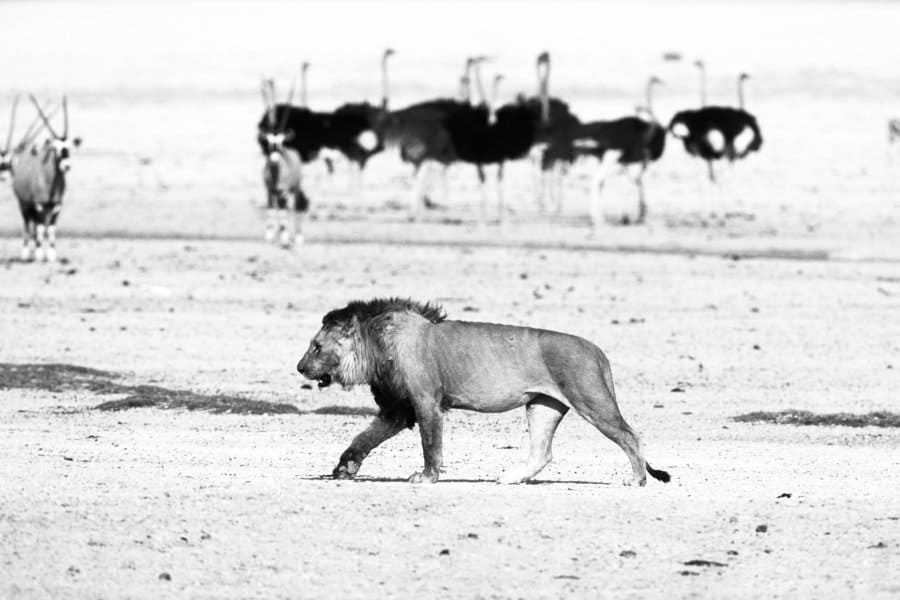What is a lion coalition?
First, think of the male lion. A symbol of strength and virility, ruling over his pride. Fighting a lone battle against enemies.
Well, that’s the image many people have.
In fact, male lions aren’t the solitary warriors you might think. Even the “king of the jungle” needs a helping paw sometimes.
That’s where the lion coalition comes in. A feline fraternity to fight off all comers, protect prides, or take new territory by force.
So…What is a Coalition of Lions?

A coalition of lions sounds like a strategic, political alliance. And it is, sort of. If you’re imagining polite parliamentary debates, though, you’re off the mark.
A lion coalition is simply a group of two or more (and occasionally up to seven) male lions who have “teamed up.”
These males are often brothers, half-brothers, or cousins who grew up in the same pride. Occasionally, non-related males will form a coalition.
Whether related by blood or not, these males form strong bonds with one another.
Why Do Male Lions Form Coalitions?
A male lion’s life is no picnic. It’s tough, violent, and often short.
There’s a stereotype of the lazy male lounging in the shade while the lionesses do all the work. It’s not completely wrong; females do the bulk of the hunting. (And lions do sleep a lot!)
But the larger, stronger male is expected to put his body on the line.
He’ll patrol territory, see off threats, and even fight off challengers if he needs to. (And he has to fight for that territory in the first place.)
That’s much more difficult alone. Especially when his rivals have teamed up.
It makes sense to band together with fellow males. That way, they can put their combined might behind gaining and maintaining territory.
Nomadic Lion Coalitions

No matter what The Lion King told you, male lions don’t inherit their kingdom. They leave the pride at two or three years old and have to fend for themselves.
Being a nomadic male is a hard life. Their days are spent struggling to survive, whether hunting/scavenging food, or trying to avoid territorial pride males.
The one positive is that they’re often not alone.
Nomadic lion coalitions are usually formed between adolescent males who have grown up together as cubs. These lions are kicked out of their natal pride at the same time, and their strong bonds are reinforced by their shared struggle.
Many will not survive these dangerous early days away from the pride.
As they grow up and become bigger, stronger, and more aggressive, their focus can shift from merely surviving to gaining territory. The more members in the coalition, the better their chances of displacing resident males.
Sometimes they’ll succeed in chasing off the resident male lions. Sometimes it comes down to a physical fight. Male lions don’t mind fighting dirty, and if they can isolate a single male and surround him, they will.
If the nomadic males succeed in chasing off, injuring, or even killing their rivals, they’ll become the new resident males.
Resident Lion Coalitions

Taking territory is one thing, but maintaining it is no stroll in the savanna.
The priority is passing on their genes and eliminating potential threats. That means chasing off or attacking adolescent males in the pride, and even killing cubs.
It may sound brutal, but there’s an evolutionary reason for it. Killing cubs leaves the lionesses free to mate again.
The new resident males may be a team, but that doesn’t mean all members are equal. The larger the coalition size, the more males will miss out on mating rights.
The most dominant member(s) will likely be larger, stronger, and have a darker mane. (Dark manes signify higher testosterone, which lionesses prefer.)
If they’re not repopulating their pride, coalitions are protecting their new territory from intruders. These could be nomadic males, or other resident males looking to take over more prides.
Things may be a little easier with lionesses to hunt for them, but the resident males have got to stay vigilant.
The Mapogo Lion Coalition

Makulu (the leader), Rasta, Dreadlocks, Pretty Boy, Kinky Tail, Mr. T.
No – they’re not about to drop 2020’s hottest rap album. They’re the members of the notorious Mapogo lion coalition. This was probably the most famous – and the deadliest – lion coalition in recent history.
Most of the Mapogo lions’ names were based on their appearance. Mr T, for example, had a distinctive mohawk mane like his namesake.
Who were the Mapogo lions?
The Mapogo lions were a band of (mostly) brothers who ruled the Sabi Sand Game Reserve in South Africa with an iron paw. (The oldest member, Makulu, came from a different pride.)
The Mapogo coalition became famous for their brutal and ruthless tactics. After leaving their pride in 2006, they quickly took over new territory and weren’t afraid to fight.
The Sabi Sand Game Reserve contained an unusually high density of male lions. This meant that the Mapogos were always coming into conflict with rival coalitions.
Having six members was a big advantage, and it allowed them to change the whole structure of the Sabi Sand ecosystem. Instead of many smaller coalitions fighting for dominance, the Mapogos ruled over eight prides.
Some estimates say they killed over 100 lions, including females and cubs, in that first year alone. Mr T, the most controversial member, was known to kill and eat cubs and even lionesses.
Are the Mapogo lions still alive?
“Live by the paw, die by the paw.”
If male lions had a motto, that would probably be it.
Some of the Mapogos died how they lived – fighting.
The infamous Mr. T was outnumbered and killed by a rival coalition in 2012. Others disappeared mysteriously, but for one reason or another, the legendary Mapogo coalition was broken.
Despite being the oldest Mapogo, Makulu was the one most recently seen alive, back in 2013. Since he was well over average age for a male lion, it’s safe to say that the Mapogos are no more.
Lion Coalitions – Part of Nature
Though male lions’ behaviour sometimes sounds brutal, they’re merely acting naturally. Only the strongest, smartest, and most ruthless individuals will become resident males with prides to rule over.
Successful males will do what it takes to survive and pass on their genes. Forming lion coalitions gives them a much better chance of doing this.
Even the most successful coalitions of lions will fall, though. There are always younger, hungrier males waiting for their chance to overthrow the kings.
See Lion Coalitions for Yourself

Though the Mapogos of Sabi Sand formed the most famous lion coalition, similar scenes play out wherever lions roam in Africa.
To catch a glimpse of a majestic coalition of lions for yourself, book a safari and see these kings in action.



